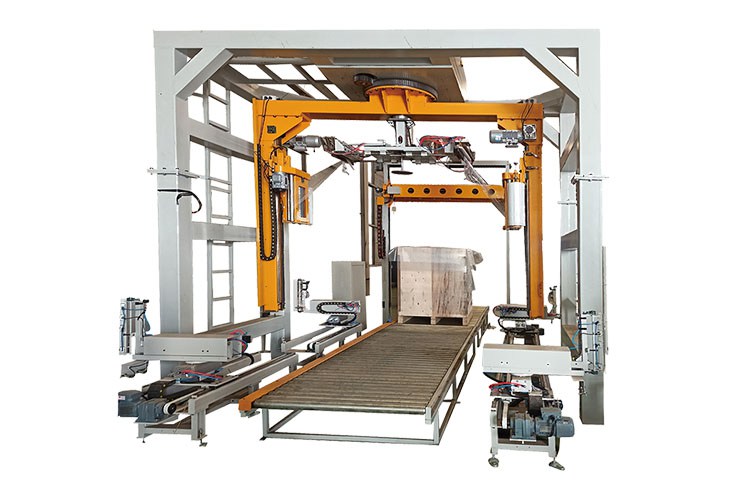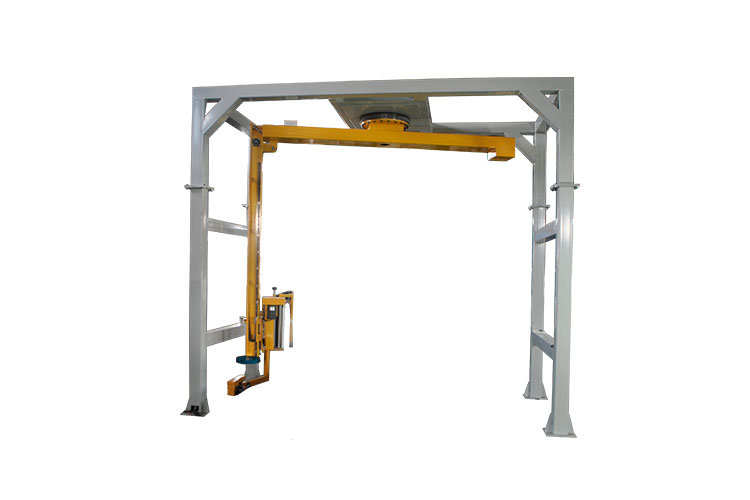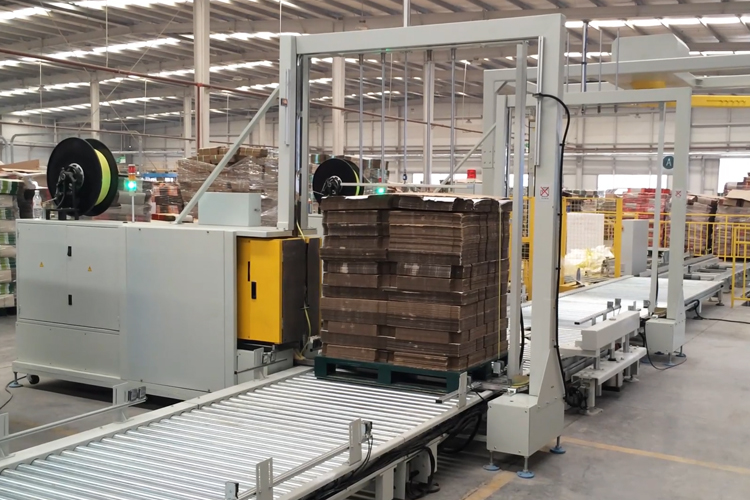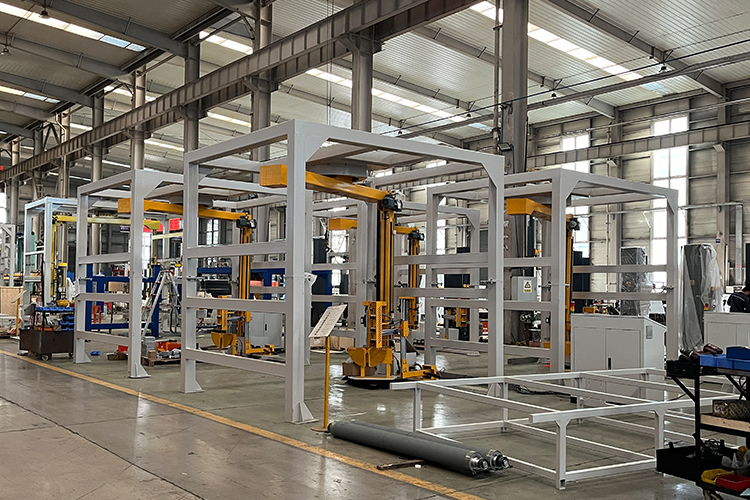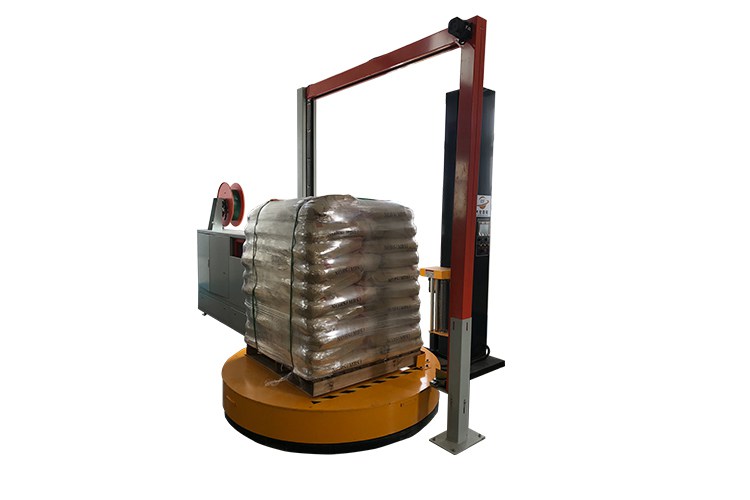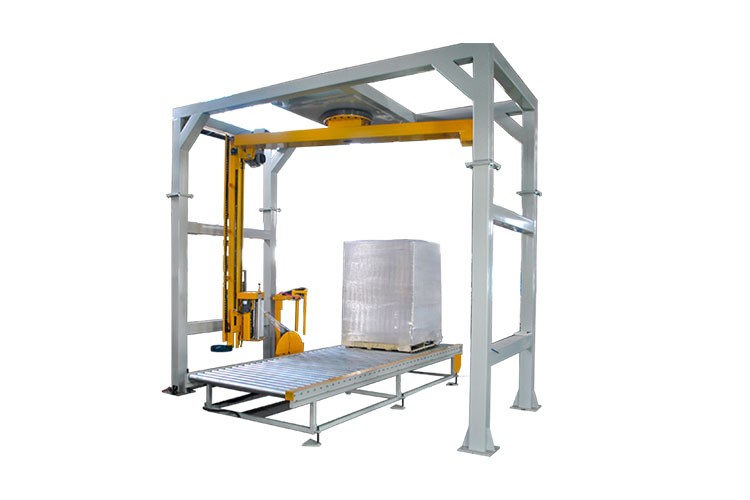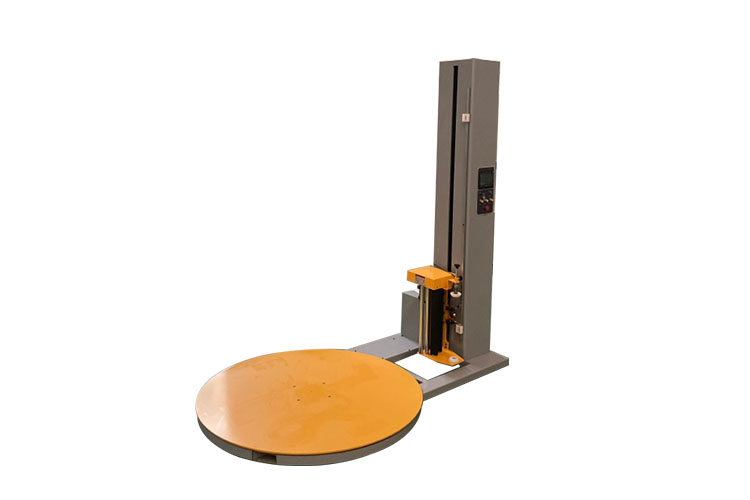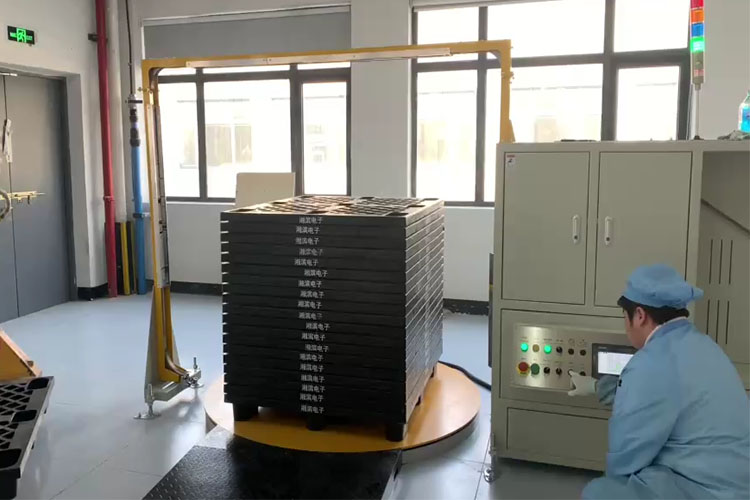This turntable stretch film wrapping machine is becoming the "standard" for shipping and packaging, completing pallet packaging with one click.
Date: 2025-08-05Id:324Views:
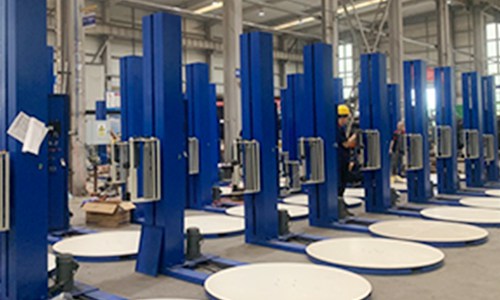
The stable turntable drives pallet rotation, enabling seamless film wrapping, with a maximum efficiency of 40 pallets per hour.
This machine utilizes a turntable design. A motor-driven 360° rotation of the palletized cargo, combined with automatic raising and lowering of the upper and lower film racks, ensures tight wrapping from bottom to top. Supported packaging sizes range from (500-1100) mm to (500-1200) mm, with a packaging height range of 500-2000 mm for L-type packaging and 500-2400 mm or more for H-type packaging, meeting the standard shipping requirements of pallets of varying sizes. The turntable has a diameter of 1650 mm and a load capacity of up to 2000 kg. It can wrap up to 40 pallets per hour, making it particularly suitable for high-frequency shipments and batch packaging. Equipped with a pre-stretched film rack, the machine saves 30% of film material and offers stable tension and resistance to film breakage.
The machine comes standard with a pre-stretched film rack structure, achieving a maximum stretch ratio of 250%, significantly reducing film usage and effectively lowering daily consumables costs. Parameters such as rack tension, lifting speed, and turntable speed are adjusted via a PLC system, tailored to the film wrapping requirements of different goods, achieving a tight, yet durable packaging effect.
The dual-chain column structure provides smoother variable frequency control and supports multiple custom functions.
The machine utilizes a dual-chain lifting mechanism, coupled with variable frequency drive control, for smooth and stable film rack raising and lowering. The control system features PLC programmable logic and a text-based user interface, making parameter adjustment easy and user-friendly. Optional features include a ramp, door-opening film rack, raised columns, weighing systems, slewing bearings, and a top film assembly to meet specific customer site requirements, creating a complete pallet packaging workstation suitable for a variety of industries, including chemicals, building materials, food, logistics, and electronics. With its mature structure and simple operation, it is the first choice for many companies seeking automated packaging.
Since its launch, turntable wrapping machines have been widely used in industries such as food and beverages, hardware and plastics, electronics and electrical appliances, automotive parts, paper products, ceramics, and chemicals due to their mature structure, simple operation, and stable performance. They are a prime entry-level option for factories transitioning from manual to automated packaging. With a power consumption of only 1.5 kW, they operate quietly, are highly adaptable, and occupy a compact footprint, making them ideal for small and medium-sized factories.
Not only does this save labor, it is also a key step in standardizing packaging processes and improving delivery quality.
In today's industry trend of "fast turnover and fast shipment," pallet packaging processes that still rely on manual labor will inevitably struggle to sustain business growth. Turntable stretch film wrapping machines, with their intelligent control, pre-stretching to save material, adjustable parameters, and automatic wrapping, help companies quickly establish standardized packaging processes, thereby reducing waste, improving efficiency, and enhancing customer satisfaction. They are a key step in promoting automation in the packaging process, replacing manual labor.
Related


